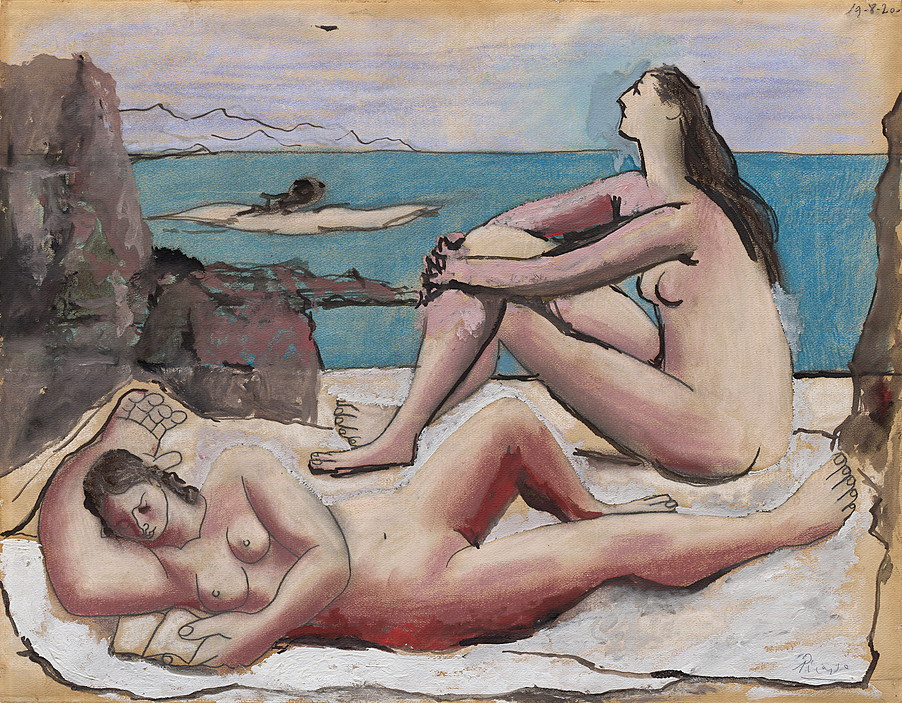art-Picasso.com
Pablo Picasso 1881-1973
©Pablo Picasso - 1920 Three Bathers
 Three Bathers |
From The Solomon R. Guggenheim Foundation:
After World War I, a number of artists active in the international avant-garde (including French painters André Derain, Fernand Léger, and Henri Matisse, as well as Italians Giorgio de Chirico and Gino Severini) turned to classicism as a source for form and content. This reinterpretation of classical imagery has been described as a search for tranquility in a world destabilized by the carnage of war and the socioeconomic upheaval caused by mass industrialization. The informal name for this period, the Return to Order, comes from French poet Jean Cocteau’s book Le rappel à l’ordre (1926), in which he discussed these developments.
One of Pablo Picasso’s early classicizing works is Olga Picasso in an Armchair (Portrait d’Olga dans un fauteuil, 1917), an oil painting of his future wife, a dancer with the Ballets Russes, in a style inspired by the work of 19th-century neoclassicist Jean Auguste Dominique Ingres. In Picasso’s static and calm composition, the figure is elegantly and ideally proportioned. Before long, however, the artist subverted his own placid style with works such as Three Bathers (Trois baigneuses, August 1920), in which he created what might at first seem like an Arcadian idyll, until one notices that the bodies of the languishing nudes are distorted. A gigantic hand and swollen arm cradle the too-small head of the reclining figure in the foreground, while the arms and legs of the seated nude are impossibly long relative to her head and torso. With these enlargements and attenuations, Picasso combined classical symmetry with its opposite, the grotesque. The liberties with form are magnified by the amount of space they take—nearly the entire width and height of the picture—and their placement against three bands of almost entirely unmodulated color meant to stand for blanket, water, and sky. The insertion of such inflated forms into a shallow space conveys a monumentality of scale, regardless of the dimensions of the work itself.
Robin Clark